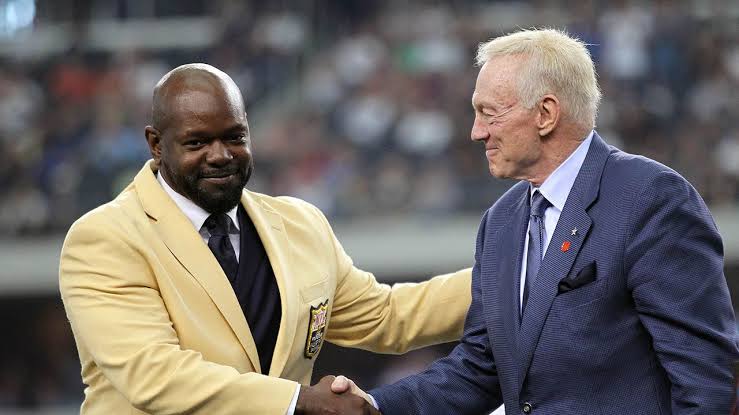In a recent statement, Dallas Cowboys legend Emmitt Smith expressed his concerns about the team’s decision to hire Brian Schottenheimer as their new offensive coordinator. Smith, who remains one of the most iconic figures in Cowboys history, voiced his doubts regarding Schottenheimer’s ability to lead a high-powered offense, raising questions about the direction of the team’s offensive play-calling.
Smith, who has spent years analyzing the team’s performance, seemed skeptical about Schottenheimer’s previous coaching history. Schottenheimer has had a varied career, with experience coaching at both the collegiate and professional levels, including stints with the Seattle Seahawks, the Jacksonville Jaguars, and the Los Angeles Rams. However, Schottenheimer’s track record as an offensive coordinator has been inconsistent, leaving many, including Smith, to wonder if he is the right fit to handle the Cowboys’ offense.
The Cowboys, under head coach Mike McCarthy, have already experienced some ups and downs on the offensive side of the ball, especially in big moments. The team struggled with consistency at times during the 2023 season, which eventually led to McCarthy taking a more hands-on approach with the play-calling. The addition of Schottenheimer, who has been described as more of a traditional offensive mind, is expected to bring a different flavor to the Cowboys’ offensive scheme.
Smith, who holds numerous records for the Cowboys and remains a respected voice in the NFL, questioned the wisdom of bringing in a coordinator with a reputation for conservative play-calling. The former running back pointed out that, while Schottenheimer has had success with running backs and managing games, he has been criticized for not always adapting his offense to fit the strengths of his players. With star quarterback Dak Prescott and a talented receiving corps at his disposal, many believe that the Cowboys need a coordinator capable of unlocking the offense’s full potential, not one who might restrict it with outdated concepts.
Schottenheimer’s hiring comes amidst high expectations for the Cowboys in 2025, as they look to bounce back from another playoff exit. The team is hoping that Schottenheimer can create a balanced offense that will allow them to compete at the highest level. However, Smith’s comments suggest that some people remain uncertain whether Schottenheimer is the right person to lead them there.
As the season progresses, it will be interesting to see if Schottenheimer can prove Smith—and other doubters—wrong by turning the Cowboys’ offense into a more dynamic force in the NFC.



